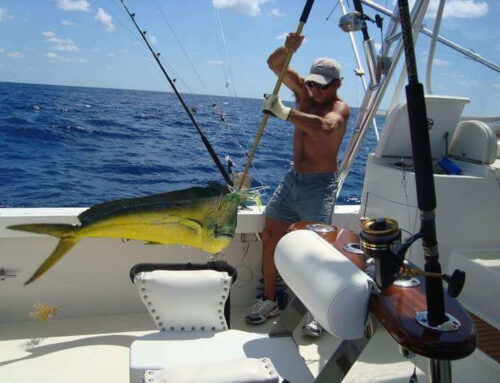Captain Wild Bill is a retired naturalist and fishing guide. He once owned Coastal Georgia Adventures, where he spent many a day sharing nautical experiences with eager, salt-air searching, passionate-about-nature people. This is an article he wrote a few years ago that gives a glimpse into several of the beautiful barrier islands on our coast while sharing tips and tricks for navigating our waters.
Recalling my first non-fishing charter, my clients were serious photographers vacationing from Tennessee. Their request was to travel by boat to view nature worthy of inspiring their passion for photography. The term “eco-trip” was new to me, so I just showed them what I love. We went to the islands! We visited Ossabaw, St. Catherine’s, Blackbeard and Sapelo; they loved it The directions from Richmond Hill are simple. One can launch from the south bank of the Ogeechee River—at Fort McAllister Marina—to experience this exact island tour. While at the marina, you may cross paths, like I did, with the seasoned captains of Sea Tow, an organization providing assistance to recreational boaters – such as pulling them off sandbars.
Yes, there are sandbars. To avoid them in the Ogeechee, the recommendation is to stay on the outside bends of the river where the currents dig a channel. From the marina, head east in the Ogeechee, towards the ocean, until you reach the Intracoastal Waterway (ICW), then head south along the four barrier islands. The ICW consists of saltwater rivers, creeks and sounds connecting to one another just inside our barrier islands that parallel the coastline. The islands sometimes act as barriers to natural forces off the ocean: storms, currents and winds— making the ICW a great path in our waters for traveling south (or north). Turn south (right) upon reaching the ICW at red marker “98.” Go around this marker, in your right turn, keeping the boat in the channel— so you won’t have to call Sea Tow.
On your chart, this will be called the Florida Passage and it leads into Bear River. As you proceed south, on your left is Ossabaw Island, Georgia’s third largest barrier island. Ossabaw and its surrounding marsh encompass 25,000 acres. Visiting this island is a full day in itself. Ossabaw is owned by the state, and you must prearrange your visit— unless you visit the open-to-the-public south beach area. Since we’re heading south, it’s perfect. Approaching the southern end of Ossabaw, the island’s white sandy beaches are on your left, and St. Catherine’s Sound is in front of you.
 Across the sound lies nature-filled St. Catherine’s Island. Straight across St. Catherine’s Sound leads to Walburg Creek, and the north end of St. Catherine’s Island. Look for Bald Eagles, ospreys, hogs, deer and alligators here! On the northern tip of this island is a spectacular boneyard of fallen pines and oaks. Their large trunks lay barely in the water, a light gray, appearing like bones, saltwashed and bleached from sun. Next is the island’s north beach, a favorite for relaxing and wading. St. Catherine’s is a privately-owned island. While there, be respectful and keep in mind that we are allowed on land only up to the high-tide line, known as the “high watermark.” Continuing southward, we move through Walburg Creek. It’s not part of the ICW, but it leads back into it. Walburg Creek opens up into the ICW and North Newport River. Now, let’s make a left turn, heading south into the ICW. You’ll only be in the North Newport River for a few minutes. Take the first left, following the ICW, into Johnson Creek.
Across the sound lies nature-filled St. Catherine’s Island. Straight across St. Catherine’s Sound leads to Walburg Creek, and the north end of St. Catherine’s Island. Look for Bald Eagles, ospreys, hogs, deer and alligators here! On the northern tip of this island is a spectacular boneyard of fallen pines and oaks. Their large trunks lay barely in the water, a light gray, appearing like bones, saltwashed and bleached from sun. Next is the island’s north beach, a favorite for relaxing and wading. St. Catherine’s is a privately-owned island. While there, be respectful and keep in mind that we are allowed on land only up to the high-tide line, known as the “high watermark.” Continuing southward, we move through Walburg Creek. It’s not part of the ICW, but it leads back into it. Walburg Creek opens up into the ICW and North Newport River. Now, let’s make a left turn, heading south into the ICW. You’ll only be in the North Newport River for a few minutes. Take the first left, following the ICW, into Johnson Creek.
Johnson Creek travels along the south side of St. Catherine’s Island, leading to Sapelo Sound. Here, you cross from the south beach of St. Catherine’s over to the north beach of Blackbeard Island. Blackbeard Island is off the beaten path and has been federally owned since 1800. It’s a beautiful national wildlife refuge full of incredible walking trails, and two-thirds of the exterior of the island offers white sandy beaches with lots of shells. Reaching this island, turn your boat a short distance, following the channel. Stay close to the island thereby avoiding two large ballast rock piles located in the area much further off the bank. Staying right, hugging the island close on your left, you’ll enter Blackbeard Creek— a favorite of many nature lovers.
This creek, full of character, winds its way through a wildlife refuge between two barrier islands. Listen for cackling marsh hens and smell the rich tidal estuary. Blackbeard Island is on your left, and Sapelo Island is on your right. At most places, the creek is narrow and allows your vision to reach out and feel both islands in a single glance. A couple locations in the creek have a prehistoric Jurassic atmosphere. The first one is along the bank of Blackbeard Island starting at the curve of Nelson’s Bluff. It’s a high bluff of rolling sand dunes, overgrown by scrub saw palmettos and moss covered oaks, where the current of the creek has carved a steep bank.
Alongside it, the weathered trees lay in the water. Not far, on the Sapelo side of the creek, there’s an even higher area named Raccoon Bluff, a completely different type of land formation of clay instead of sand, but also with fallen trees. When the water is calm, reflecting the bluff covered in lush forest, it looks sacred. Soon, after passing both bluffs, there’s a slight curve, a high sandy area, a bluff of beach dunes covered in sea oats. Look closely, you can see a few walking paths cut through the steep sand bank. Here you definitely want to peek at what’s on the other side of the sea oats. In a matter of feet lies a secluded beach, like a hidden secret, on the Atlantic Ocean. Continuing in the creek to its nearby ocean entrance, Cabretta Inlet. You’ll find the remote unspoiled beachfronts of Blackbeard and Sapelo, as far as you can see. This is just a glimpse into the extensive amounts of nature, history and fishing along our coastline.





